Transform Your Backyard with This Ultimate Outdoor Turtle Pond Setup Guide
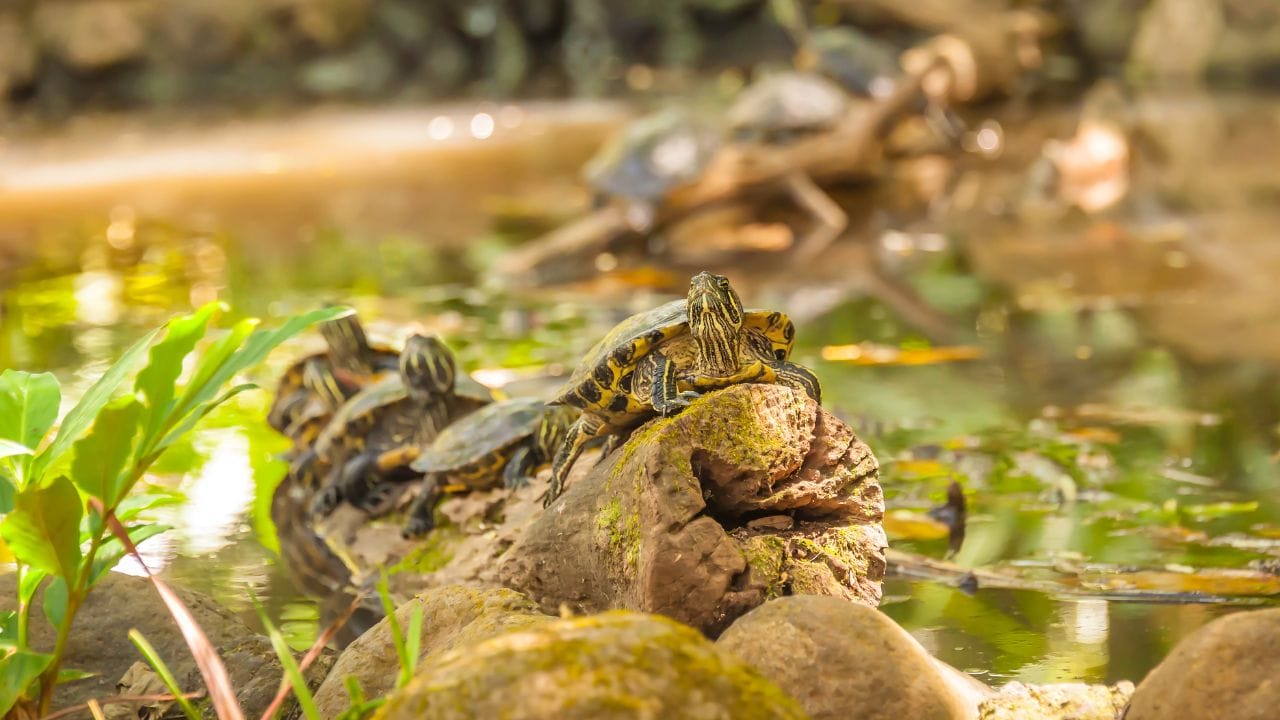
This post was created with help from AI tools and carefully reviewed by a human (Muntaseer Rahman). For more on how we use AI on this site, check out our Editorial Policy.
Imagine stepping outside each morning to the sight of sunbathing turtles in your own backyard pond.
Setting up an outdoor turtle pond can feel daunting, but with this ultimate guide, you’ll have all the tools and tips to create a pond that’s both easy to maintain and turtle-friendly.
Let’s dive into everything you need to make this vision a reality.
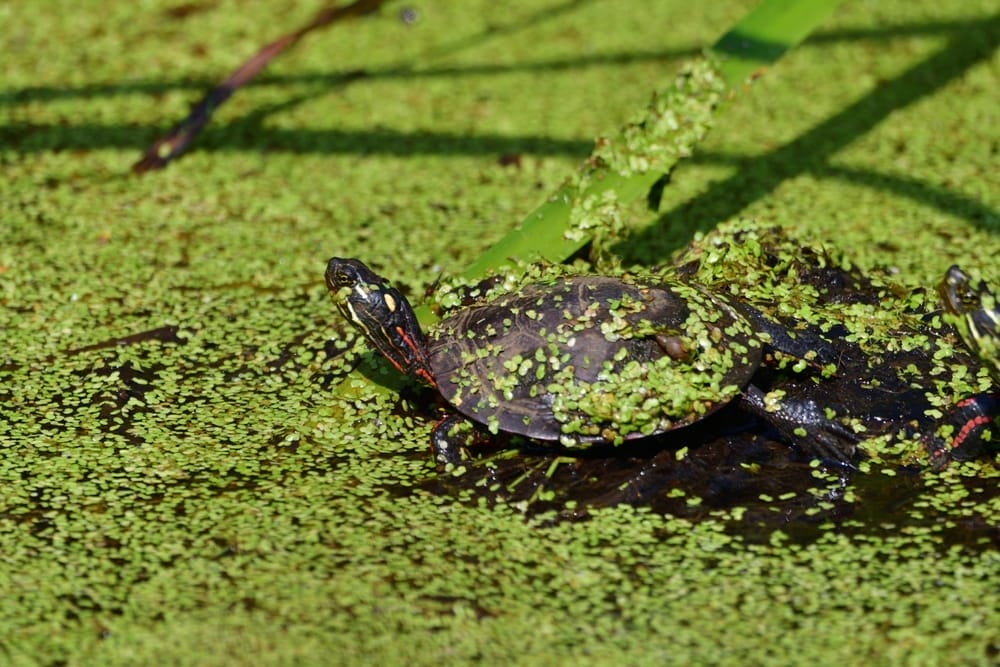
Planning Your Turtle Pond Setup
Planning your turtle pond is a lot like planning a mini vacation spot for your turtles! Here’s how to get started so they’ll feel right at home in your backyard.
Step 1: Pick the Perfect Spot
Look for a place with both sun and shade. Turtles love basking in the sun but need a cool retreat when they’re done. A sunny spot with a nearby tree or partial shade is perfect.
Things to Consider:
| Element | Why It Matters |
|---|---|
| Sunlight | Turtles need sun for warmth. |
| Shade | Helps them cool down and prevents overheating. |
| Predator Protection | Choose a spot close to your house or in a fenced area if possible. |
Not sure which species will thrive in your climate? Review our 15 turtle species perfect for outdoor ponds before finalizing your location choice.
No outdoor space or harsh winters in your area? Our indoor turtle pond guide applies these same principles in a climate-controlled environment.

Step 2: Decide on Pond Size
Size really matters here! Turtles are messy, and they need plenty of space. Go bigger than you think. If you have two small turtles, start with at least a 50-gallon pond; bigger turtles need more water and room.
When I first built my pond, I thought a small setup would be fine. Wrong! Bigger is better – trust me!
Quick Size Guide
| Turtle Size | Suggested Pond Size |
|---|---|
| Small (up to 5 inches) | 30-50 gallons |
| Medium (6-8 inches) | 75-100 gallons |
| Large (9+ inches) | 100+ gallons |
Step 3: Check Your Local Regulations
Some places have rules about backyard ponds, especially if they’re deep or large. Call your city or check online to avoid any surprise fines or issues later.
Step 4: Think About Depth
A pond with some shallow and deep spots works best. Your turtles will appreciate options – a place to swim and a shallower area to stand and relax.
| Depth | Who Likes It |
|---|---|
| Shallow (1-2 feet) | Baby turtles, smaller species |
| Deep (2-3 feet) | Larger turtles, adults |
Step 5: Choose a Spot Safe from Predators
Turtles are snack-sized for some wild critters! Birds, raccoons, and even neighborhood cats can pose a threat. Pick a location near your home or consider adding a protective fence or netting if you’re worried.
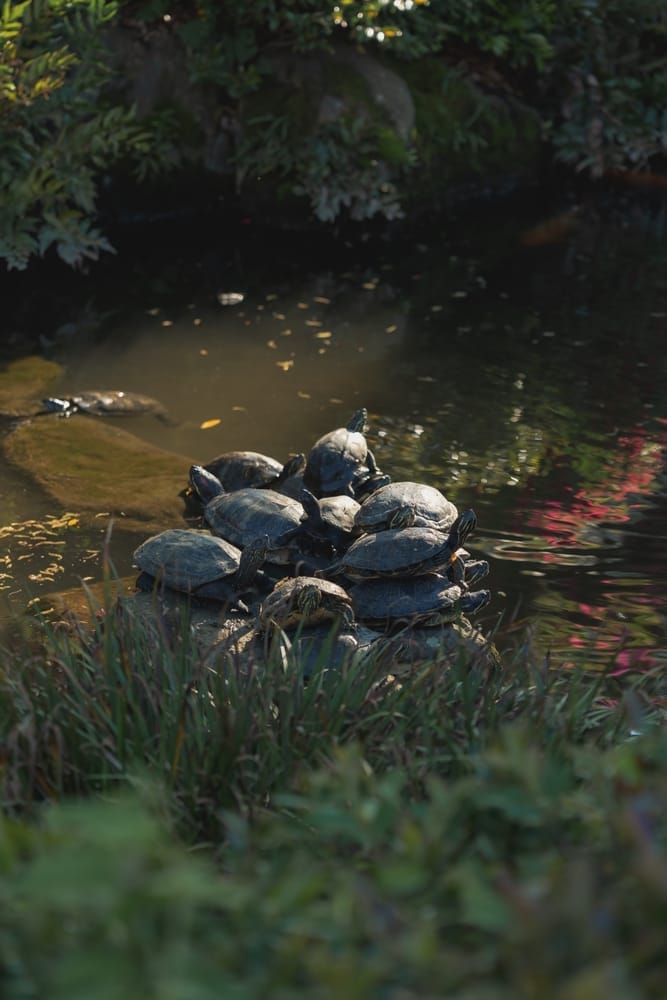
Essential Materials and Tools for Your Outdoor Turtle Pond
So, you’re ready to build a turtle pond! Before we dig in (literally), let’s make sure you have the right materials and tools to create a comfy and clean home for your turtles. You don’t need to be a DIY expert—just gather these essentials, and you’ll be good to go!
1. Pond Liner or Pre-Formed Pond Kit
- Liner: This is a waterproof sheet that lines your pond, usually made of rubber or PVC. It’s flexible, so you can make any shape you like.
- Pre-formed Pond Kit: A rigid, molded plastic shell. It’s easier to install but comes in limited shapes and sizes.
| Option | Pros | Cons |
|---|---|---|
| Pond Liner | Flexible shapes, usually cheaper | Installation takes a bit of work |
| Pre-formed Kit | Quick setup, sturdy | Fewer size/shape options |
Tip: I went with a liner to get a natural look and feel. My turtles love it!
Working with a tight budget? Our kiddie pool turtle pond setup uses many of these same principles for under $100.

2. Filtration System
- Turtles are messy—they need a strong filter to keep their water clean.
- Look for a filter that can handle at least twice the pond’s volume.
Without a good filter, pond water can turn swampy fast. Mine started looking more like “Turtle Soup” than “Turtle Paradise” until I installed a decent filter!
3. Water Pump
- Pumps keep the water moving, which prevents it from becoming a breeding ground for bacteria.
- Choose one that matches your pond size.
Still water? Stale vibes. With a pump, you’ll keep things fresh and help your turtles stay healthier!
4. Aquatic Plants and Gravel
- Plants: Get hardy, turtle-safe plants like water hyacinth or duckweed. These plants give turtles shade and hiding spots.
- Gravel: Lays at the pond bottom, creating a natural look. Just make sure it’s big enough that turtles won’t accidentally eat it!
Plants add a splash of green and make the pond feel like home. I added a few plants, and suddenly my turtles started playing hide-and-seek. (Spoiler alert: they’re not great at it!)
5. Heating Lamps or Pond Heaters (Optional)
- In colder areas, turtles may need a pond heater or basking lamp.
- Heaters keep the water from getting too chilly in winter, while basking lamps give turtles a sunny spot on cooler days.
If you’re somewhere tropical, you can probably skip this. But my chilly fall mornings? My turtles give me the cold shoulder if I forget their lamp.
Gather these items, and you’re all set! With the right setup, your turtles will have a clean, cozy home, and your backyard will have an amazing new feature. Now, let’s start building!

This Hilarious Turtle Book Might Know Your Pet Better Than You Do
Let’s be real—most turtle care guides feel like reading a textbook written by a sleep-deprived zookeeper.
This one’s not that.
Told from the snarky point of view of a grumpy, judgmental turtle, 21 Turtle Truths You’ll Never Read in a Care Guide is packed with sarcasm, sass, and surprisingly useful insights.
And hey—you don’t have to commit to the whole thing just yet.
Grab 2 free truths from the ebook and get a taste of what your turtle really thinks about your setup, your food choices, and that weird plastic palm tree.
It’s funny, it’s honest, and if you’ve ever owned a turtle who glares at you like you’re the problem—you’ll feel seen.
Building the outdoor turtle Pond: Step-by-Step Guide
So, you’ve decided to dive into the world of backyard turtle ponds. Great choice!
Here’s how to get it done in a way that’s simple, quick, and turtle-approved.
| Step | Action |
|---|---|
| Mark and Dig | Outline shape and dig |
| Install Liner or Shell | Lay down liner, check for rocks |
| Set Up Filtration | Position and connect filter |
| Fill with Water | Add water slowly, check leaks |
| Add Basking Areas | Place rocks/logs for basking |
Step 1: Mark and Dig the Pond Area
- Mark Your Spot – Use a garden hose or string to outline the shape and size. I learned the hard way that eyeballing it can lead to some strange pond shapes!
- Start Digging – Aim for at least 18 inches deep. Deeper is better if you live somewhere with cold winters. Make sure to keep the edges smooth.
Pro Tip: Keep the dirt you dig out! You can use it to build up areas around the pond or create a hill for landscaping.
Step 2: Install the Liner or Pre-formed Shell
- Choose Your Liner – Liners are flexible and let you pick any shape; pre-formed shells are ready-made and easier to install.
- Lay It Down Carefully – For liners, drape it over your dug-out shape, making sure there are no wrinkles or sharp objects underneath.
- Fill with a Few Inches of Water – This will help settle the liner or shell and make it easier to adjust.
| Liner Type | Pros | Cons |
|---|---|---|
| Flexible Liner | Custom shape, durable | Can be tricky to install |
| Pre-formed Shell | Easy install, sturdy | Limited to set shapes |
Pro Tip: My first pond leaked because I skipped checking for sharp rocks under the liner. Don’t be like me—do a quick sweep with your hand first!

Step 3: Set Up the Filtration System
Turtles are messy—let’s just say it. So, a good filter is crucial.
- Position the Filter – Most pond filters have a pump and filter box. Place them where they’re easy to reach, ideally near the pond’s edge.
- Connect the Filter and Pump – Run the pump hose into the filter and plug it in. You’ll start seeing the water circulate.
Pro Tip: Test the filter before adding turtles. That way, you know it’s working and won’t have to chase a turtle around later.
Step 4: Add Water and Check for Leaks
Now, it’s time to add water!
- Fill Slowly – Don’t rush it; let the water settle into the liner and adjust any wrinkles.
- Check for Leaks – Walk around the pond to make sure water isn’t escaping anywhere.
Step 5: Create Land and Basking Areas
Turtles need a sunny place to rest. Adding a few rocks or a floating platform will make them feel at home.
- Add Rocks or Logs – Place large, stable rocks at the pond edge for easy climbing. Or get a floating turtle dock.
- Secure Basking Areas – Make sure they’re stable! Wobbly rocks or logs can stress your turtles.
Pro Tip: I thought my turtles would just know where to bask. They didn’t! Make it easy for them with lots of access points.

Adding Turtles and Plants to the Pond
Adding turtles and plants to your pond is the most exciting part. This is when it all starts coming to life! I remember my first time adding turtles—it was like welcoming new friends to the family.
Choose the Right Turtles
Not all turtles do well outdoors. Some need warmer water, while others can handle the cold. Here are some great outdoor-friendly turtles:
| Turtle Species | Notes |
|---|---|
| Red-Eared Slider | Easy to find and hardy |
| Painted Turtle | Great in various temperatures |
| Yellow-Bellied Slider | Loves ponds and basking areas |
Remember, avoid mixing aggressive turtles with shy ones, or they might not get along. I learned this the hard way when my Red-Eared Slider kept chasing the shy little Painted Turtle around!
Add Aquatic Plants for Beauty and Hiding Spots
Plants do more than look pretty. They give turtles places to hide, shade to cool off, and natural food. I noticed my turtles loved to hide in the tall plants, especially when they wanted a break from the sun.
Here are some easy-to-care-for pond plants:
- Water Lettuce – Big, floating leaves and shade.
- Anacharis (Elodea) – Perfect for munching!
- Water Lilies – Lovely flowers, plus shade.
Mixing plants also helps keep the water clean, making it easier to maintain.
Choose from our recommended 20 best turtle pond plants—all verified safe and beneficial for turtle habitats.
Acclimating Turtles to Their New Home
When you’re ready to add turtles, take it slow. Let them sit in a shaded spot beside the pond for a bit. They’re probably curious but cautious. After a few minutes, gently place them in the shallow end of the pond. Watch as they explore their new home!
- Don’t overcrowd the pond. Turtles like their space.
- Keep an eye on the plants; some turtles might snack on them a lot.
Adding turtles and plants will instantly transform your pond into a lively oasis! Enjoy watching your new friends settle in. It’s worth every second.

Keeping That Turtle Pond Fresh and Fabulous!
Alright, you’ve got a pond. It looks beautiful, the turtles are happy, and now…it’s time for maintenance! Keeping your pond in top shape is super simple if you stay on top of a few basic tasks. Let me break it down into bite-sized tips for you.
Master these 7 essential pond cleaning tips to maintain crystal-clear water with minimal effort.
1. Weekly Quick-Check
Think of this as your pond “spa day.” Just like we freshen up our homes, your pond needs a little weekly TLC.
Skim Off Leaves and Debris: Grab a net and scoop out any leaves or dirt that found its way in. (It’s oddly satisfying!)
Check the Filter: Make sure it’s running smoothly. If it looks clogged, rinse it out. Dirty filters = dirty water!
2. Monthly Deep Clean
Once a month, go a little deeper. Don’t worry, no heavy lifting needed!
| Task | What to Do |
|---|---|
| Trim Plants | Keep them in check so turtles have room to swim. Snip away dead leaves, too! |
| Vacuum the Pond Floor | Yes, there are pond vacuums! They suck up the sludge and grime. |
| Check Water Levels | Evaporation happens. Top up the water if it’s getting low. |
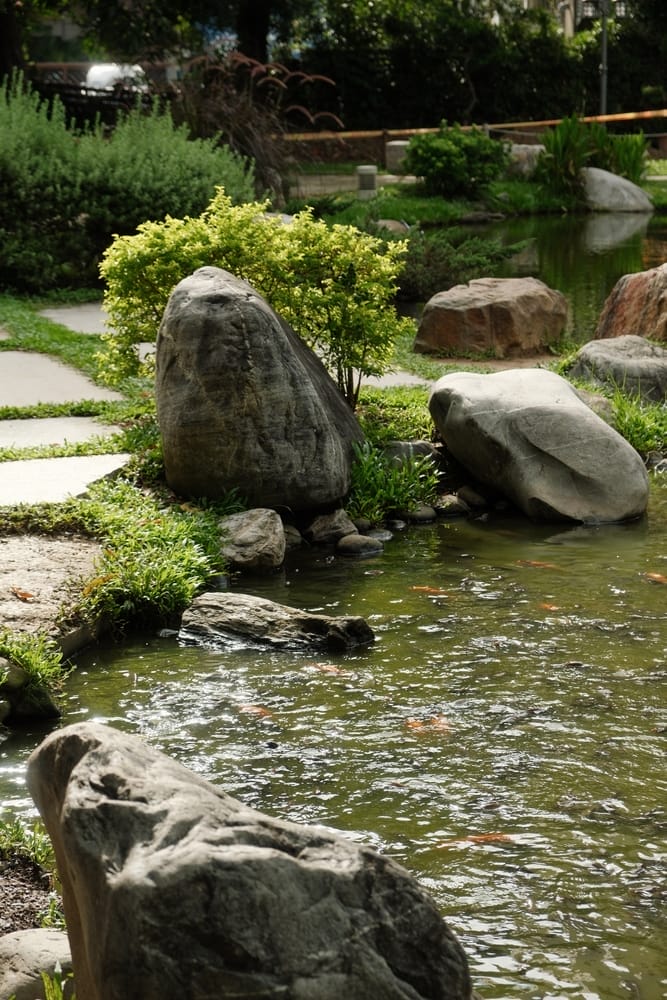
3. Watch That Water Quality!
Turtles are particular about their water quality (aren’t we all?). Clean water keeps them happy and healthy.
- Test the Water: Use an easy water test kit to check pH levels. Aim for 6.5-8.0 (turtles are picky, but not that picky).
- Dechlorinate: If you add tap water, use a dechlorinator so it’s safe for your turtles.
Pro tip: I have a reminder on my phone to test my pond’s water every two weeks. Little things like that make life way easier.
4. Seasonal Prep: Tackle the Weather
Changing seasons can mess with your pond’s vibe. Here’s how to prep for each one.
In Winter
- If it’s super cold where you live, consider a pond heater. No one likes freezing water—not even turtles!
- Add some leaf netting to keep out the fall leaves.
In Summer
- More sun means more algae. Try shading part of the pond or adding more plants to reduce algae bloom.
- Top off evaporated water as needed.
5. Keep an Eye Out for Trouble
Spotting problems early makes fixing them easy.
- Algae Bloom: If you notice green water, it might be algae. Try adding a few extra plants to naturally reduce it.
- Weird Turtle Behavior: If your turtles are hiding all the time or looking lethargic, it might be a water quality issue.
Pond maintenance doesn’t have to be a chore. I find it’s a nice break from the day-to-day, and the turtles seem to appreciate it too. Enjoy your little slice of pond paradise!

Safety Tips for a Turtle Pond
Keeping your turtle pond safe isn’t hard, but it does take a few simple steps.
Here’s how to make sure your turtles (and pond) stay happy and protected!
| Potential Issue | Quick Fix |
|---|---|
| Predators | Fence or net cover |
| Overcrowding | Follow the 10 gallons per inch rule |
| Sharp Edges | Smooth out rocks and decor |
| Excess Algae | Add pond plants to control it |
1. Protect Against Predators
Think raccoons, birds, and even neighborhood cats—these animals might see your turtles as snacks. I once found a raccoon paw print on my pond rocks! So, here’s what worked for me:
- Fence it in: A small, low fence around the pond can keep most animals away.
- Add a net cover: Stretching a net over the pond can also stop birds and other animals from diving in.
2. Provide Plenty of Hiding Spots
Turtles need places to hide and feel safe, especially if they get startled. Add a few rocks, logs, or big plants where they can duck away from any surprises. It’s also a fun way to make the pond look natural!
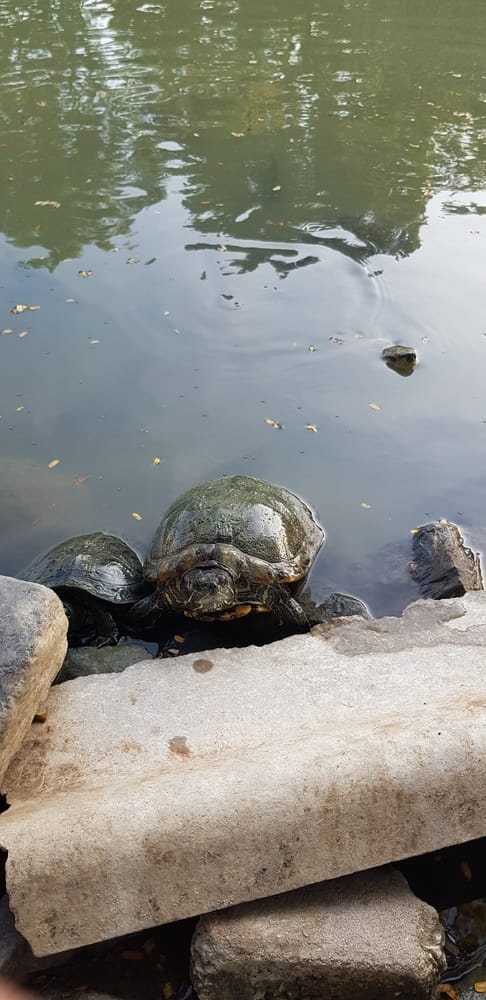
3. Avoid Overcrowding the Pond
More turtles don’t mean more fun! Too many turtles can lead to fighting and dirtier water. Each turtle needs its own space to swim, bask, and just be a turtle.
- Tip: A good rule is about 10 gallons of water for every inch of shell length.
4. Watch Out for Sharp Edges
Turtles love to explore, and they have sensitive shells. I learned the hard way with one of my own turtles who scraped his shell on a rough rock! Check that any rocks, decorations, or logs are smooth and safe.
5. Keep an Eye on Algae Growth
Algae loves ponds, but too much of it makes things slippery and can lower water quality. A little bit is fine, but if it’s taking over, you’ll want to clean it up.
- Pro tip: Add a few pond plants—they naturally help keep algae down!
With a few safety steps, your turtles will be happy and stress-free in their pond!
And trust me, once your pond’s all set up, you’ll enjoy just as much as they do. Keep an eye out, but don’t forget to relax and have fun with your new outdoor turtle friends!
Outdoor turtle pond setup guide infographic
For a printable version of this infographic, click here!

About Author
Muntaseer Rahman started keeping pet turtles back in 2013. He also owns the largest Turtle & Tortoise Facebook community in Bangladesh. These days he is mostly active on Facebook.












